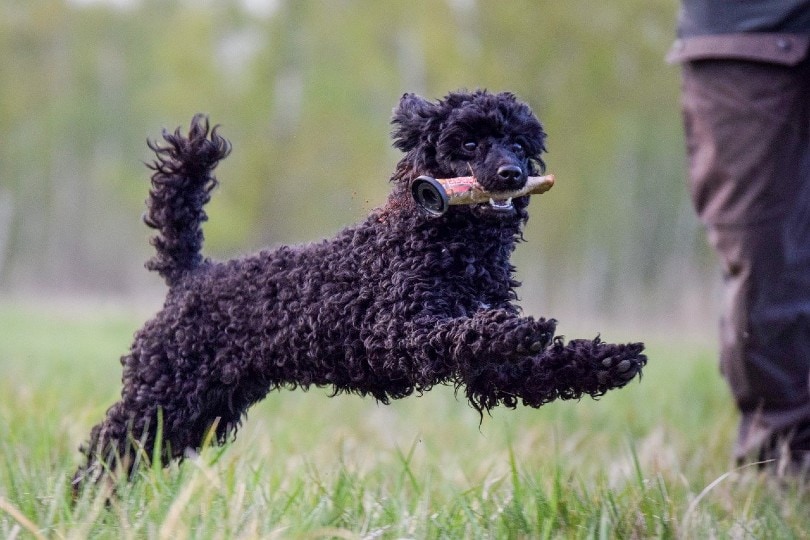What Temperature Is Too Cold to Walk My Dog? Vet-Reviewed Facts & FAQ
By Grant Piper
Updated on
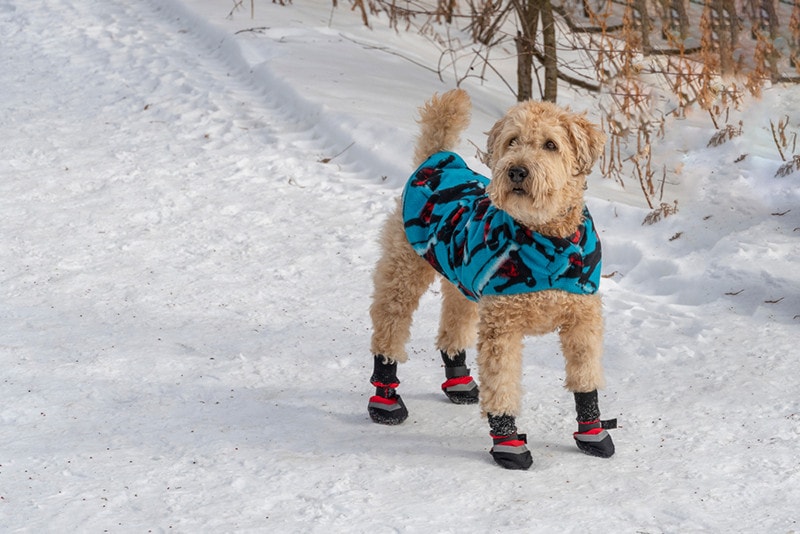
Click to Skip Ahead
Winter can be a long and dark season for many people who live in northern climates. Even when the temperatures drop and the weather turns nasty, dogs still need to go outside for fresh air, exercise, and to potty. But how cold is too cold to take your dog for a walk? The answer to that will largely depend on your individual dog. Some dogs do great in cold weather, and others struggle. The size, age, breed, and health condition of your dog will determine what temperatures are too cold for them to be outside.
The hard limit is around 20-25 degrees Fahrenheit. Once the temperature drops to 20ºF or below, your dog could get cold-associated health problems if walked or left outside. Temperatures between 20 and 45ºF will vary in safety and comfort based on your specific dog. Monitoring your dog when they’re outside and looking for signs of thermal discomfort such as shivering, slowing down, or whining will be vital to protect your pup. A great option is to take your dog on shorter, more frequent walks rather than longer ones to reduce the risk. Here is everything you need to know about dogs and cold weather walks.
Overview
Weather is considered cold for dogs at around 45 degrees Fahrenheit. Once the temperatures dip to 40 degrees, you need to start paying closer attention to your dog and the weather before going on walks. Here are the temperatures that can be considered too cold to walk your dog.
40 – 45˚F
40-45 degrees Fahrenheit is the temperature that you should start being wary of the weather. Some small dogs, old dogs, and sick dogs will struggle in weather starting at 45 degrees and lower. If the temperature is 45 or below, you should take care not to spend too much time outside with your dog, especially if they are small, weak, or old. This is especially true if the weather is also wet or windy, which can exasperate cold temperatures.
You can still take your dog for walks in temperatures of 45 degrees Fahrenheit, but monitor any signs of discomfort and the temperature, especially if it is forecasted to drop further.

32 – 39˚F
Most dogs should do okay in temperatures between 32 and 39 degrees Fahrenheit, but not all of them will. This is the bracket where temperatures start becoming concerning. Dogs with little fur, little body fat, or that are particularly small, young, or old might not do well.
Monitor your dog in these temperatures, and head inside to warm up if you notice any signs of thermal discomfort.
20 – 32˚F
When the temperatures drop to freezing (32 degrees Fahrenheit) or below freezing, the weather gets more dangerous for most dogs. Large dogs and cold weather dogs will perform better in subfreezing temperatures than medium and small dogs or dogs with little fur or fat. If the air temperature is below freezing, you should limit your dog’s outside time depending on how comfortable they seem. You should also monitor your dog for signs of excessive cold (more on that below).
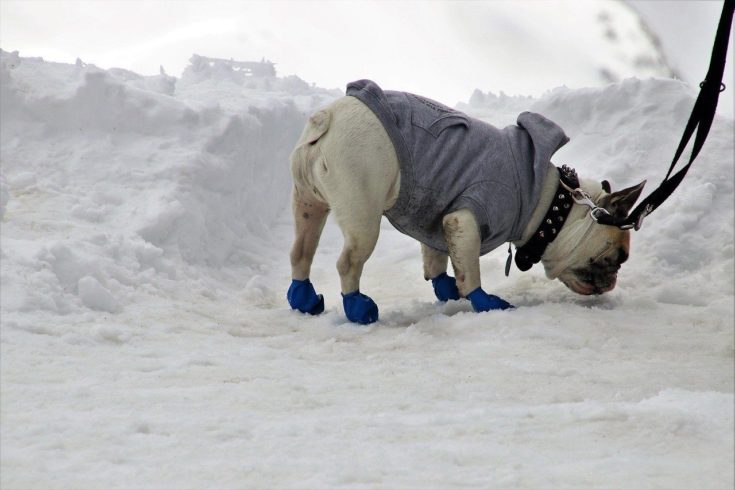
20˚F and Below
Temperatures that are below 20 degrees Fahrenheit are dangerous for all dogs. Pet parents should be extra careful and avoid walking their dogs. People should also avoid being outside in such cold temperatures for any appreciable amount of time. You can let your dog outside to relieve themselves in weather this cold, but they should not spend more than a minute or two in the cold. Extreme cold can lead to hypothermia and frostbite in dogs, and in extreme cases, it can even be fatal if they do not have the proper shelter.
 Small Dogs
Small Dogs
Small dogs are at the highest risk of succumbing to cold temperatures. Small dogs lose heat faster than larger dogs and have more trouble keeping heat. Small dogs need to be closely monitored in temperatures beginning at 45 degrees. Special care and equipment might need to be taken for small dogs that live in particularly cold climates.
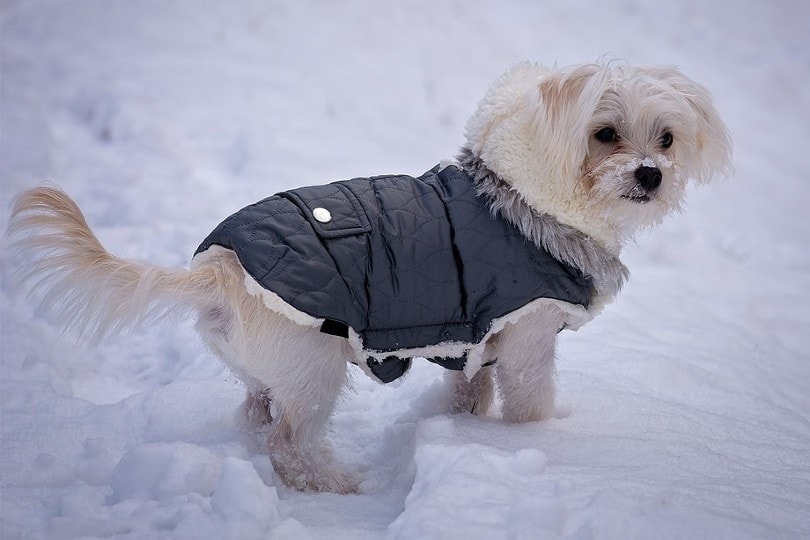
Large Dogs
Large dogs are more temperature resistant than small dogs. They can keep heat better and usually fare fine in cold weather down to the freezing mark. Below freezing, even large dogs need to be monitored for signs of being too cold.
Cold Weather Dogs
Some dogs are cold-weather breeds. Dogs like Huskies, Malamutes, and Great Pyrenees are bred to live and work in cold climates. However, these dogs do best in cold weather if they are used to the cold. Some people buy Huskies in Florida and then are surprised when the dogs don’t like a northern winter later in life. Cold weather dogs that are acclimated to cold weather can easily weather temperatures down to 0 degrees. This is due in large part to their thick coats and extra fat deposits that help insulate the dog.
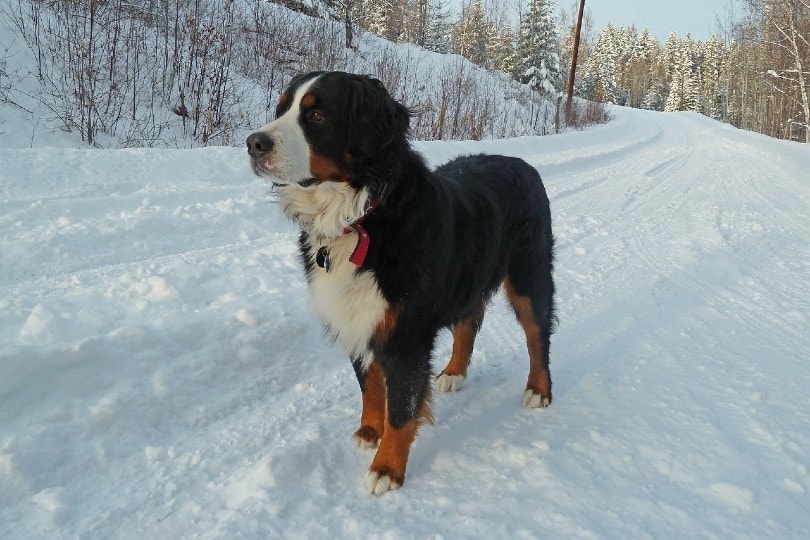
Don’t Forget the Windchill
One mistake many people make is forgetting to factor in the windchill. If it is particularly cold and windy out, you want to go by the windchill number, not the real air temperature. For example, if you are itching for a long walk and the thermometer reads 38˚F but the windchill is 25˚F, you need to be more careful. You should base your walk duration on the windchill temperature, not the real air temperature.
 How Can I Tell If My Dog Is Too Cold?
How Can I Tell If My Dog Is Too Cold?
There are many signs to look out for that tell you that your dog is getting too cold. Dogs that are starting to feel the effects of cold weather will let you know that they are unhappy.
The most common signs of being too cold include:
If your dog is exhibiting any of these signs, you should turn around and go back inside immediately. You should warm your dog up, wipe their paws with a cloth and warm water, and look for any other adverse signs like lethargy or frostbite.
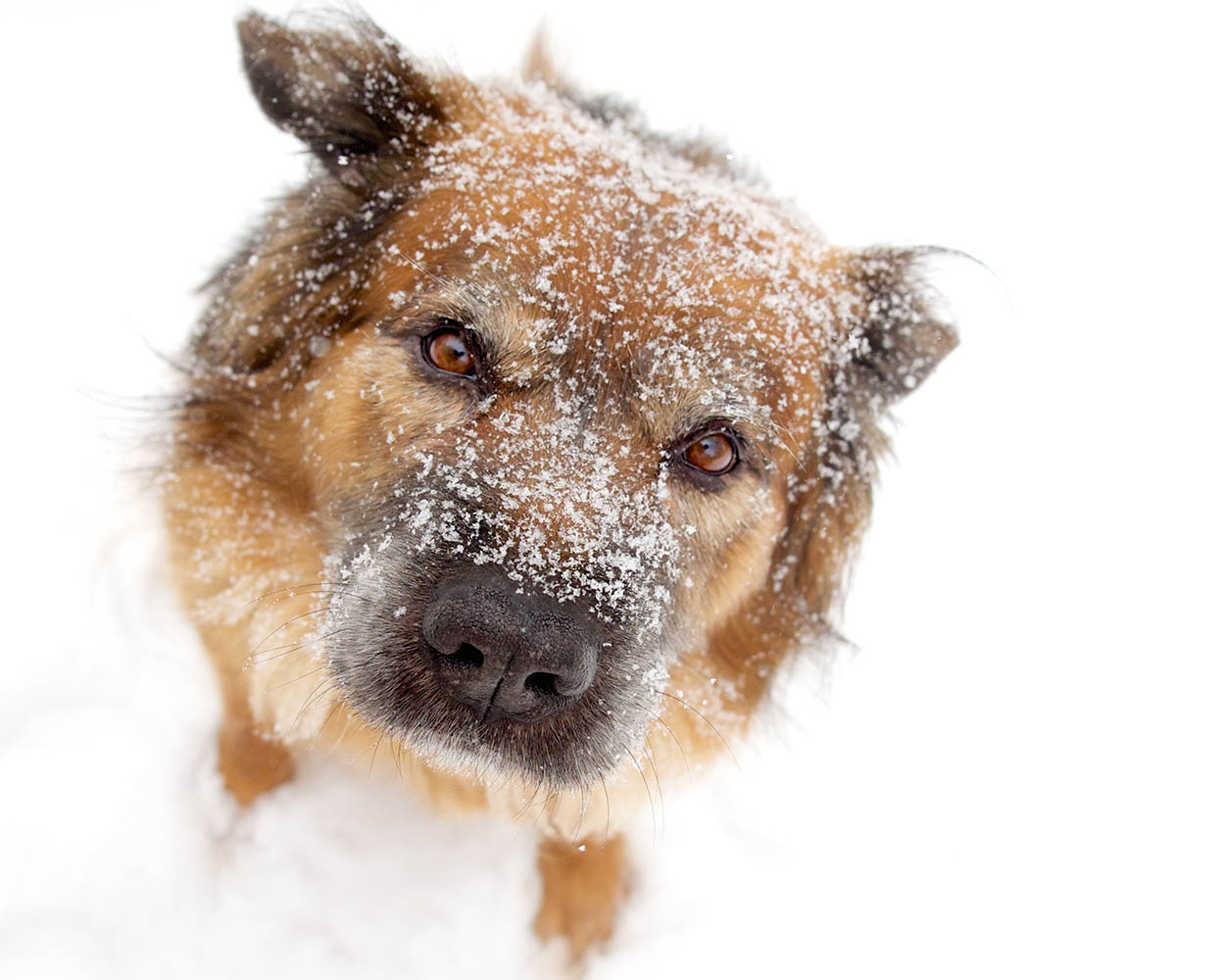
What to Do If You Need to Walk Your Dog in Extreme Cold?
Sometimes you need to take your dog outside in the extreme cold. You cannot expect them to hold their urine for hours or days as you go through a brutal arctic cold snap. If you need to take your dog outside during extreme cold, there are a few things you should do and consider.
The key to cold weather walks is to bundle your dog up and spend as little time outside as possible. Keep an eye on their health and behavior. Basically, you just want to let them do their business before going back inside. Dogs do not want to be outside in an uncomfortable cold, and they will likely do their business quickly and be eager to get back inside.

 Conclusion
Conclusion
Cold can be dangerous for both people and dogs. However, dogs still need to be taken for walks, even if the weather is chilly. You need to keep an eye on the temperature and the forecast to ensure safe walks during brutally cold temperatures. Don’t get surprised by windchill or dropping temperatures. Pay attention to your dog and keep walks short when the mercury drops below 32 to 40˚F depending on your dog’s individual features.
See also: What Temperature Is Too Hot to Walk My Dog? Vet-Reviewed Facts & FAQ
Featured Image Credit: ben44, Shutterstock


 Small Dogs
Small Dogs How Can I Tell If My Dog Is Too Cold?
How Can I Tell If My Dog Is Too Cold?
